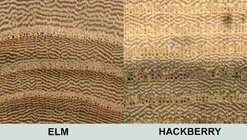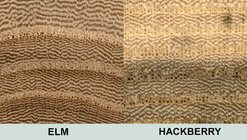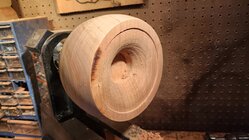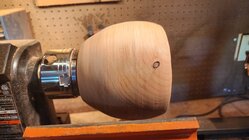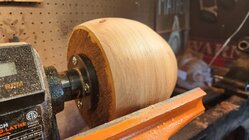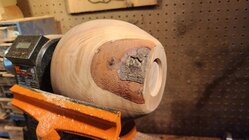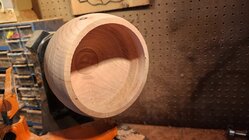The magic of wood ID is mostly in the end grain. Most everything else is a guess. Having the bark (and if possible the leaves) help tremendously - there are lots of resources on the internet to identify trees.
I got started on the hobby of wood identification when looking at a bowl passed around at a club meeting. The turner had labeled it "cherry" when it was obviously ring porous, even to the naked eye. Cherry is not.
One easy thing to do is take a small piece of the wood, maybe at least 3/4"x1/2" and big enough to hold, and shave the end grain with a single edged razor blade to remove all saw and tool marks that hide the pores.
Use a 10x hand lens and examine the pores. R. Bruce Hoadley's book "Identifying wood" is an incredible resource, but the online Wood Database web site includes end grain photos of all the common species. Their article on identifying wood shows the basic technique, read section 7 here:
https://www.wood-database.com/wood-articles/wood-identification-guide/
(Also note that you can also get free professional wood ID from the USDA wood products laboratory. They used to accept up to 5 sample per year per US citizen but later changed to 3 per year. We did that once - someone mailed me a small sample and she also mailed one the the gov lab - fortunately we both agreed on the species - it was an easy on: elm)
This page is also useful in that it shows how wrong we can be by simply looking at the wood surface and grain:

www.wood-database.com
If you REALLY want to see the wide extent of variability in wood appearance, look at hobbithouseinc. (I know, it's an odd name for a wood website but well worth bookmarking!) Select a species from the wood pics list and be amazed at the differences. There are even some turned examples at the bottom of each species page. Here is the entry on american black cherry:
The Hobbithouseinc pages also include closeup pictures of end grain.
I have used a 10x magnifier but since I have a low power stereo microscope I prefer to use that - easier to see.
You basically examine the pore size and distribution, rings, and rays. Some are tricky but some are trivial. For an example, look at the the difference between red and white oak: both are strongly
ring porous with large earlywood pores and tiny "tornados" of latewood pores. However, the earlywood pores of white oak are filled with tyloses (making white oak good for outdoor furniture and whisky barrels!) The large pores of red oak are open and more like soda straws.
View attachment 67687
This is black/wild cherry, classified as
semi-diffuse porous or semi ring porous. (All these pics are at the same magnification)
View attachment 67691
You can find end grain pics of different species at the wood database web site. Cherry is here:

www.wood-database.com
For anyone interested in this I can recommend R. Bruce Hoadley's book
Identifying Wood. And I think his book
Understanding Wood is a must have for anyone who works with wood and wants to understand how it grows, dries, shrinks, and warps - necessary for a high rate of success when cutting up logs into wood blanks for drying. I buy extra used copies of the second book to loan to people who express an interest. (Hoadley is both a wood technologist and a craftsman - he understands the technical aspects of wood as well as how they apply to those of us who like to play with wood!)
Since it's often impossible to identify wood correctly by looking at the side grain or even the various surfaces of a turning, when people hand me a piece of wood and ask what it is I usually examine it closely for a moment then pronounce "It's definitely "tree wood".
JKJ

















